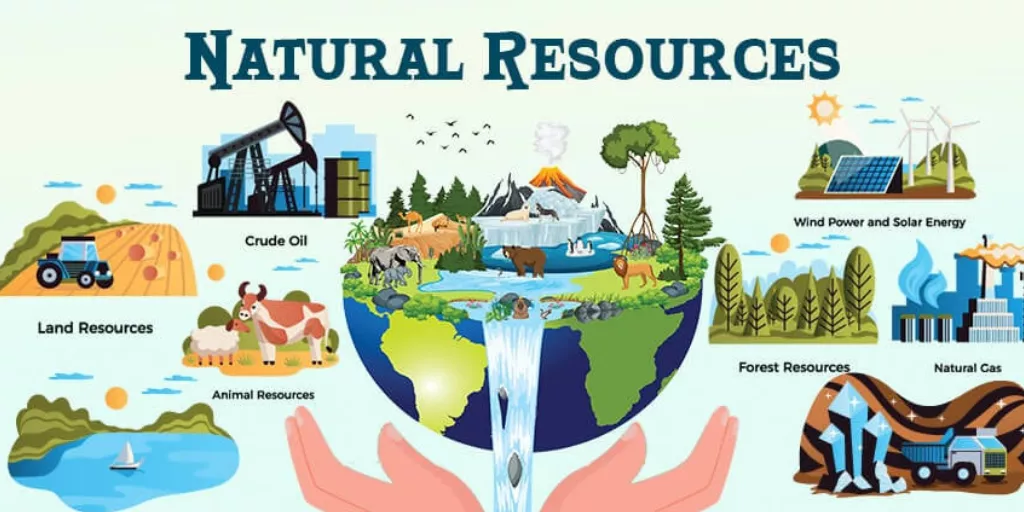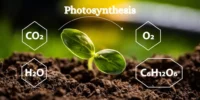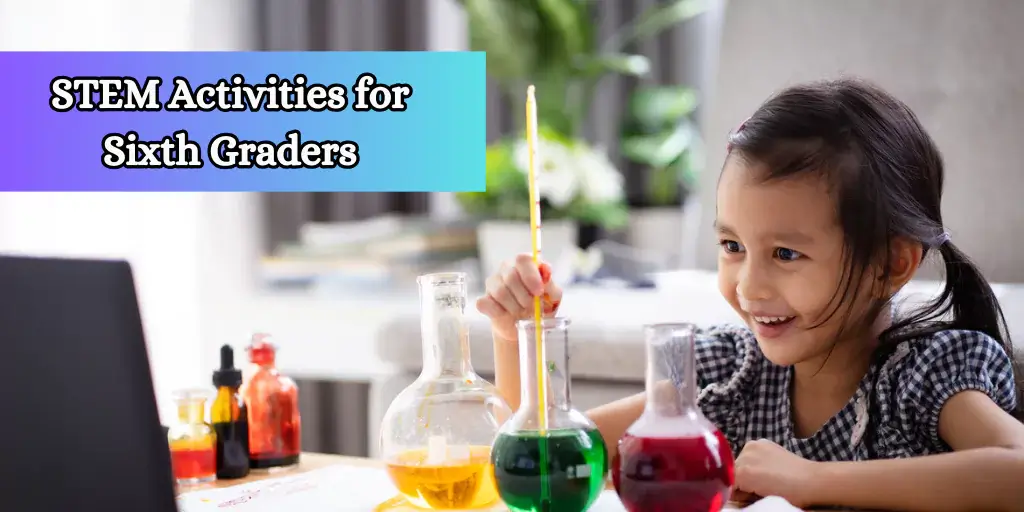Have you ever pondered where the water, air, and electricity for your home originate from? All of them are natural resources, or nature’s offerings. These resources are critical to our survival and assist us in innumerable ways every day.
What Are Natural Resources?
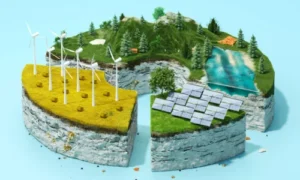
Natural resources are materials or substances obtained from nature and used by humans for a variety of purposes. They are not man-made, but occur naturally on Earth. Natural resources are the foundation of everything, from the food we eat to the fuel that powers our cars.
Types of Natural Resources
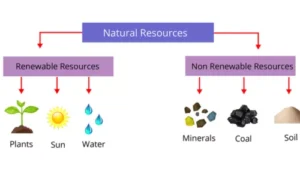
1. Renewable resources
These are resources that can be regenerated naturally over time. Examples include:
- Sunlight is utilised for solar energy.
- Wind is used in wind turbines to create power.
- Water is used for drinking, agriculture, and electricity.
- Forests give oxygen, wood, and shelter to species.
2. Non-renewable resources
Once depleted, these resources are scarce and difficult to replenish. Examples include:
- Coal, petroleum, and natural gas are utilised as fuels.
- Minerals—such as gold, iron, and copper—are used in industries.
How We Use Natural Resources
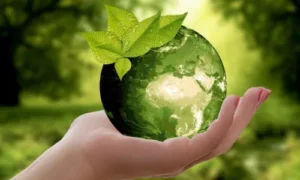
Natural resources play a vital role in our daily lives. Here are some examples of how we use them:
- Water: For drinking, cleaning, cooking, and growing crops.
- Air: For breathing and supporting life.
- Sunlight: For warmth and generating solar power.
- Soil: For growing plants and providing food.
- Minerals: For making tools, buildings, and technology.
- Forests: For timber, paper, and maintaining ecological balance.
Why Conservation Matters
While natural resources make our lives more comfortable, overuse can result in major issues such as pollution, deforestation, and climate change. Nonrenewable resources, once depleted, cannot be replenished. That is why it is critical to utilise them responsibly and protect the environment.
Simple Ways to Save Natural Resources
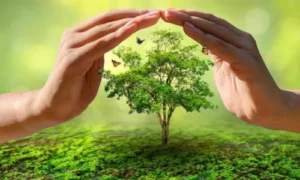
1. Turn off lights and fans when they are not in use.
2. To save fuel, use public transportation or carpooling.
3. Avoid wasting water.
4. To restore natural equilibrium, plant more trees.
5. Recycle and reuse materials.
6. Switch to renewable energy sources, such as solar power.
Conclusion
Natural resources are nature’s valuable riches. They provide us with life, energy, and comfort. However, it is our job to use them properly and keep them safe for future generations. We can all benefit from a greener and healthier Earth if we make a few adjustments in our daily activities.


